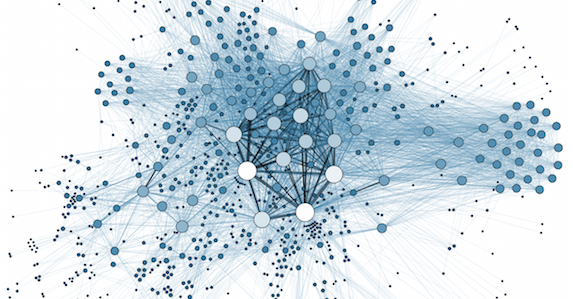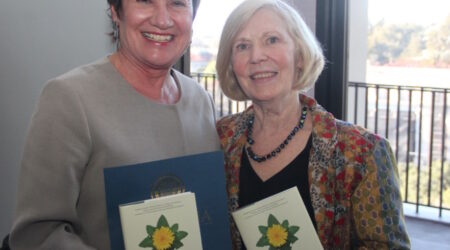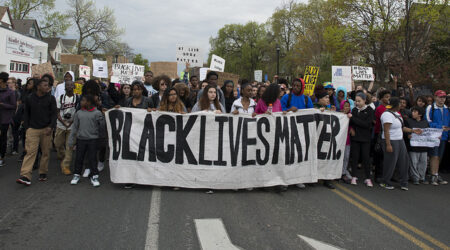The question of mortality may be as much about how we live as when we die. As the surgeon Atul Gawande writes in his book, Being Mortal, “how we seek to spend our time may depend on how much time we perceive ourselves to have.” In nations like the United States, where births and deaths are fastidiously recorded, data can give the public a good idea of approximately how much time that is. But in many parts of the developing world, millions of people live and die unseen by census-takers and other vital registration systems, a situation that some have termed a “scandal of invisibility”.
UC Berkeley demographer Dennis Feehan hopes to illuminate invisible populations through his work on mortality estimates. Using data from fieldwork in Rwanda, he recently co-authored a paper, “The Network Survival Method for Estimating Adult Mortality: Evidence from a Survey Experiment in Rwanda,” that used the “network survival method”—a methodology based on interviewing individuals about their social networks—to better understand health outcomes and death rates. We interviewed Feehan to discuss his research. [This interview was edited for length and content.]
Matrix: How would you summarize the main takeaways of your paper on using the network survival method to estimate adult mortality?
Dennis Feehan: Historically, it’s been really difficult to try and estimate adult death rates in many developing countries. In the U.S., we’re used to hearing about adult deaths from the vital registration system; we have the infrastructure to get information that way. But in other places, it can be tricky; a lot of countries don’t have great mortality records. In those countries, we can conduct scientifically rigorous household surveys that can be used to estimate things like child welfare or economic success, but we can’t use those approaches very easily to study deaths. There’s a simple reason for that: you can’t interview people who have died.
Consequently, demographers have historically used an approach called the “sibling survival method” to investigate mortality. This approach involves surveying respondents about their siblings. That’s a good idea, but it turns out that for most conventionally-sized surveys, that doesn’t produce quite enough information to precisely estimate death rates by age and sex. It also turns out that just understanding the overall death rate without knowing the age and sex patterns isn’t that helpful for most purposes.
The idea behind my paper was to try and combine the sibling method with other social network methods that have been used in anthropology and sociology, and mash them up to create a different approach that allows us to promote bigger networks than just the sibling network. The result is that it can produce more precise estimates of death rates.
Matrix: Why did you and your co-authors pick Rwanda?
 Feehan: One reason is that this problem of trying to estimate death rates is particularly salient in Sub-Saharan Africa. There are other parts of the world where it’s also a challenge, but many countries in Africa have trouble getting national-level adult death rate estimates. Rwanda was already conducting a study that was interested in analyzing with social network methods. The way the survey was being run was very similar to the Demographic Health Survey (a gold standard of health information in the developing world). Because we were using a new method, it was important to us to use an approach that we thought of as realistic and similar to the kind of survey data we wanted to collect. So when the opportunity arose to partner with that study to ask our questions, we did.
Feehan: One reason is that this problem of trying to estimate death rates is particularly salient in Sub-Saharan Africa. There are other parts of the world where it’s also a challenge, but many countries in Africa have trouble getting national-level adult death rate estimates. Rwanda was already conducting a study that was interested in analyzing with social network methods. The way the survey was being run was very similar to the Demographic Health Survey (a gold standard of health information in the developing world). Because we were using a new method, it was important to us to use an approach that we thought of as realistic and similar to the kind of survey data we wanted to collect. So when the opportunity arose to partner with that study to ask our questions, we did.
Matrix: How receptive were survey respondents, and were they able to provide the requisite estimates the surveys asked for easily?
Feehan: It varies. I’ve conducted surveys like this in several different places now. Generally speaking, one has to think about it a little bit before one answers these questions. For the purposes of the method, the precise answer to each question doesn’t have to be exactly right; instead, it’s more like the average answer across respondents has to be right.
The idea is that it’s hard to answer these questions, and it might be easier to answer questions like this with some networks instead of other networks. It might be easier to report about who you shared a meal with rather than about people you just know somehow. Something I’d like to explore in the future is whether there are even more close or strong types of relationships that one could ask questions about.
The idea in the Quantity vs. Quality paper [which Feehan co-authored and published in 2015] is that there might be a trade-off between quantity and quality. Take the context of mortality: I could ask you to talk about your siblings, whom you presumably know a lot about, meaning that you can provide accurate information. However, you probably don’t have that many siblings. Certainly the average Rwandan doesn’t.
On the other hand, if I ask you about how many people you shared a meal with in the last year, that’s almost certainly a much bigger number of people—whom you also probably don’t know as much information about, meaning your reports won’t be quite as accurate. There’s maybe a trade-off in between those two extremes where we can find a network that we can accurately report about, that produces information about a decent number of people but where the information is high quality. We looked at two different networks in that study, and ideally I’d like to research more of them. That’s something that remains to be done.
Matrix: How did you get the idea for using the “meal network”?
Feehan: That was pretty hard to come up with. We talked with a lot of people in Rwanda about it. When we were planning the study, we had a big workshop in Kigali where we talked to a lot of Rwandans and asked questions about who people interacted with. We wanted to find something that we thought respondents would be able to report accurately about, but that would also provide information about a reasonable number of people from each interview.
What we found in “Quantity Versus Quality” was that, at least from these internal consistency checks, it seems to be the case that the meal network results are more accurate (even though the meal network is smaller), compared to the acquaintance network. If we conducted a study where we tried a wider range of types of network, we might be able to narrow down more precisely whether there is a definition that makes this optimal trade off between quality and quantity.
Matrix: Is the network that works best culturally bound? Is it possible that a different kind of network might work better somewhere else?
Feehan: It is culturally bound. An advantage of the approach that we developed in the mortality paper is that it can be customized to different settings. So if you wanted to try to measure adult mortality in a different country, you could go there and talk to people and try to understand what their networks are like and how they interact with each other, and it might be that the meal definition doesn’t make the most sense in that setting, and it would be some other method that would make the most sense. The way we think about it, it’s possible to customize the way you gather data to the setting when you’re conducting the survey. I’d say that’s an advantage of our approach. It does mean that you have to try to understand the social networks of wherever you’re going to study, but that’s something you should always do anyway.
It’s important to try and estimate adult death rates, both instrumentally—because they’re important input to policy and to try to understand scientific questions—but also as a matter of human rights.
Matrix: Were there any differences in the challenges you noticed in the field in Brazil versus Rwanda?
Feehan: The sample in Rwanda is nationally representative, and that’s no joke. What that means is that you start with the census, and you sample these village-sized areas of the country, and then you send teams to the villages that you sample, and they have to map every building in the village, and then they go around and figure out how many people live in each house, and then you draw a sample of people in the houses. There’s a lot of work that goes into that.
The study in Brazil wasn’t nationally representative. Instead, it was a sample from 27 different cities in Brazil. It was a different sampling process. We started with the census in Brazil and sampled census blocks. The geographic scale wasn’t quite as big. On the other hand, these 27 cities are very different from each other. By and large, Brazil is a middle-income country with a tremendous amount of inequality, and Rwanda is more of a developing country. It’s a very different country from Brazil.
The studies were different, but they both involved household surveys. They were in-person interviews, so there’s this notion that you have to go find households and interview people there; most interviews in the U.S. these days are done over the telephone or online, which is obviously cheaper…but there are trade-offs.
Matrix: What are the new directions your research will be going in?
Feehan: I would love to take the network survival method to new countries; I’m actively pursuing doing that. In the short term, I have all these data that we collected in Brazil—that was a pretty big study, so for the next year I’m going to be focusing on that. But I think that there’s a lot of ways that the network survival method, which is about death, could also be adapted to understand migration better, or adapted to an online setting, so I’m excited about working in those areas too.
Matrix: The average American may not think a whole lot about the importance of accurately estimating mortality rate. How do you explain that this matters?
Feehan: Before I went to graduate school, I was a research assistant. I was stunned when I learned that we really can’t directly measure life expectancy in Sub-Saharan Africa. There’s a lot of good work that tries to estimate it, but it just seemed like a really really important thing that we should be able to measure, think about, and discuss when we try to understand if we’re doing well and what we can improve on.
The paper mostly talked about death rates, which is a little bit of inside baseball because that’s something we think about a lot as demographers and social scientists. I imagine that most people in the world don’t really know what a death rate is, which is reasonable. So one connection that I’d draw is this: you need these death rates to be able to calculate life expectancy. It’s really critical that we understand what life expectancy is and how it’s changing, how it’s increasing or decreasing, because it tells us quite literally how much life we have. It’s probably the single most important indicator of population health and arguably the most important indicator of well-being, and there’s a case to be made that it’s more important than GDP or labor productivity or all kinds of statistics that we tend to report about every day in the newspaper.
It’s important to try and estimate adult death rates, both instrumentally—because they’re important input to policy and to try to understand scientific questions—but also as a matter of human rights. Life expectancy is something we owe it to ourselves to measure around the world.
Top Image credit: Martin Grandjean, Creative Commons Attribution-Share Alike 3.0 Unported License via Wikimedia Commons.



